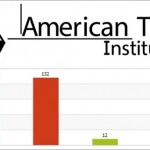Blockchain technology, often associated with cryptocurrencies like Bitcoin, has the potential to transform various sectors, including education. While it might seem complex at first, understanding its basic principles and applications can empower TESOL teachers to leverage this innovative technology for enhanced learning experiences.
What is Blockchain?
Imagine a digital ledger, shared across a network of computers, where information is recorded in “blocks” linked together in a chronological “chain.” This chain is secure, transparent, and tamper-proof, making it ideal for storing and verifying information.
How Can Blockchain Benefit ESL Education?
- Secure and Transparent Record-Keeping:
- Student Records: Store student data, transcripts, certifications, and achievements securely on the blockchain, ensuring authenticity and easy verification.
- Teacher Credentials: Verify teacher qualifications and experience through blockchain-based credentials, increasing trust and transparency.
- Personalized Learning and Assessment:
- Individualized Learning Paths: Track student progress and tailor learning experiences based on their needs and achievements recorded on the blockchain.
- Automated Assessments: Use smart contracts to automate assessments and provide instant feedback, freeing up teacher time for individualized support.
- Enhanced Collaboration and Communication:
- Decentralized Platforms: Create decentralized learning communities where students and teachers can connect, share resources, and collaborate on projects.
- Secure Communication: Ensure secure and transparent communication channels between students, teachers, and parents through blockchain-based platforms.
- Streamlined Administration and Management:
- Efficient Enrollment: Simplify enrollment processes and reduce administrative burden through blockchain-based student and teacher registration systems.
- Secure Payment Processing: Facilitate secure and transparent payment processing for tuition fees and other educational expenses.
- New Opportunities for Learning:
- Tokenized Incentives: Reward students for achievements and participation through tokenized incentives, increasing motivation and engagement.
- Access to Global Resources: Connect students with educational resources and opportunities worldwide through decentralized blockchain networks.
Resources for Exploring Blockchain in Education:
- MIT Media Lab: Researching and developing blockchain applications for education.
- ODEM: A blockchain-based platform for creating and accessing educational courses.
- Sony Global Education: Developing blockchain solutions for secure data management in education.
Getting Started with Blockchain:
- Educate Yourself: Explore online resources, articles, and courses to understand the basics of blockchain technology.
- Join Online Communities: Engage with blockchain enthusiasts and educators in online forums and communities.
- Experiment with Blockchain Tools: Explore user-friendly blockchain platforms and tools to gain hands-on experience.
Challenges and Considerations:
- Scalability: Blockchain technology needs to be scalable to handle large amounts of educational data.
- Privacy: Ensure compliance with data privacy regulations when storing sensitive student information on the blockchain.
- Integration: Integrating blockchain with existing educational systems requires careful planning and collaboration.
By understanding the potential of blockchain and embracing its applications, TESOL teachers can be at the forefront of innovation in education, creating more secure, personalized, and engaging learning experiences for their students.



